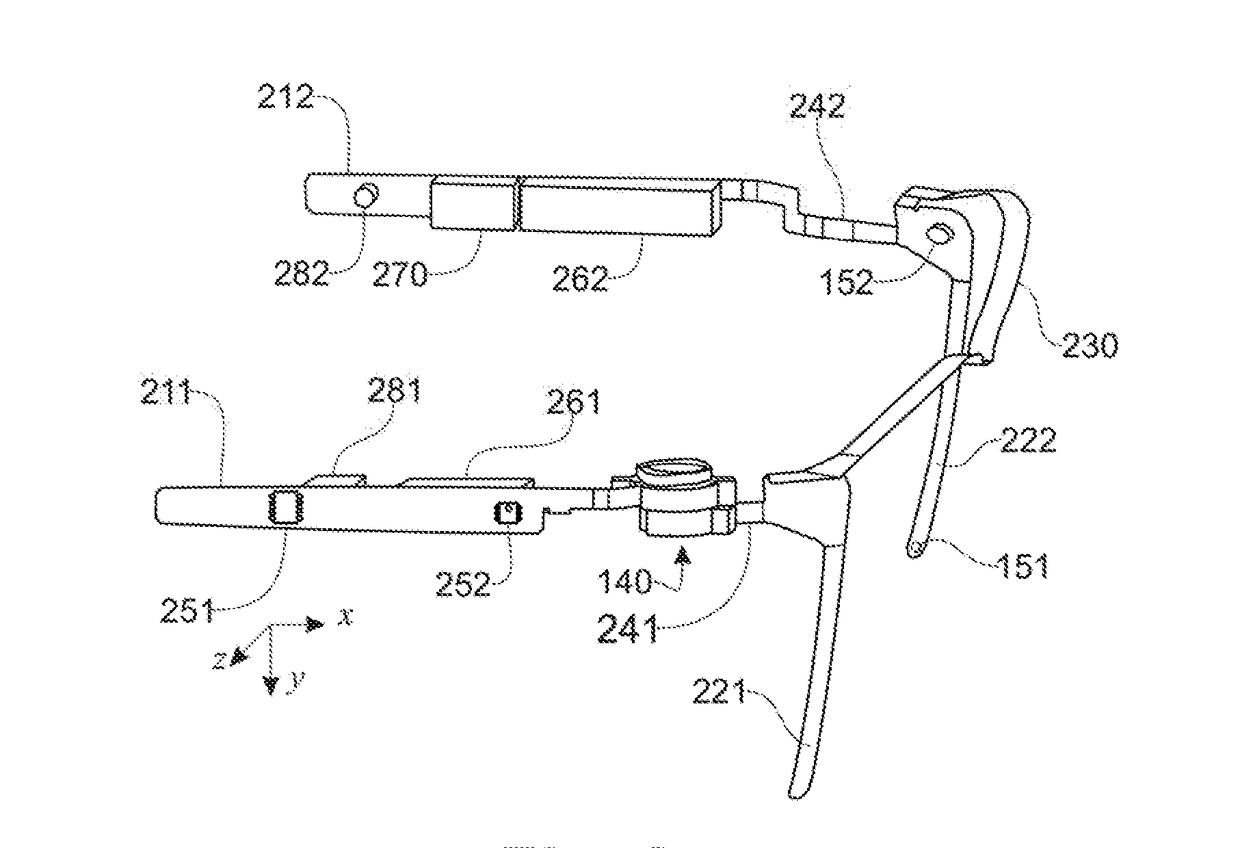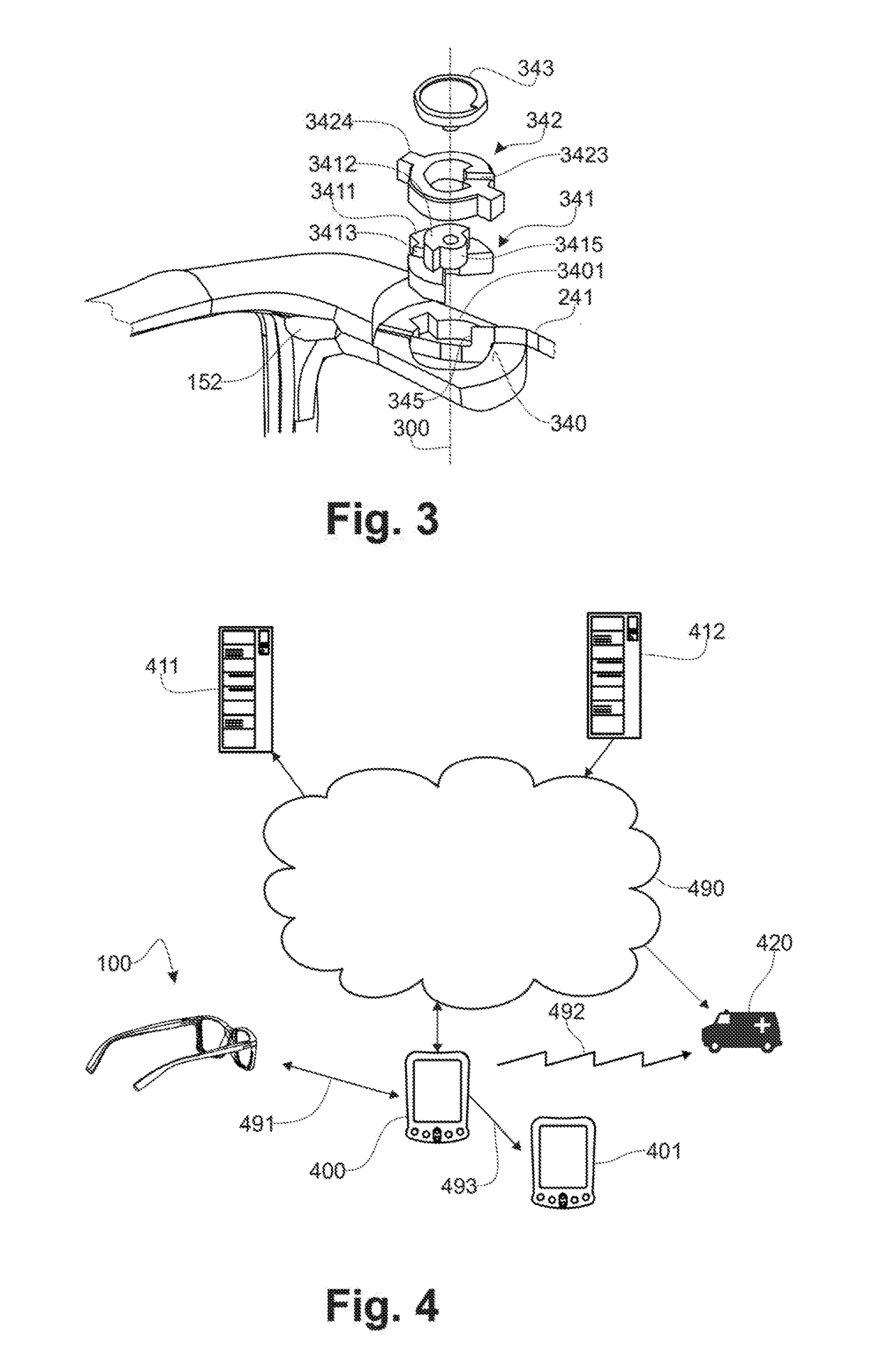Personal system for the detection of a risky situation and alert
- Summary
- Abstract
- Description
- Claims
- Application Information
AI Technical Summary
Benefits of technology
Problems solved by technology
Method used
Image
Examples
Embodiment Construction
[0090]FIG. 1, according to an exemplary embodiment, sensors of the system of the invention are borne by a pair of spectacles (100), featuring two hinged stems (110), two rims (120) holding the prescription or not lenses, said rims (120) being linked by a bridge (130) resting on the nose of the user when the spectacles are worn. According to this exemplary embodiment, the stems comprise two parts. A first part (111), so-called front part, extends from the stem hinge (140) along about half of the stem length. The second part (112) of the stem, so-called aft part, is connected to the first part (111) e.g. by clipsing. This second part rests on the ear of the user, and include or not a curved temple tip, also called earpiece, pursuant to different styles of eyeglasses. According to this exemplary embodiment, the front part of the stem bears electronic modules, while the second part (112) does not include any electronics. Therefore, this second part is adapted to the morphology of a user...
PUM
 Login to View More
Login to View More Abstract
Description
Claims
Application Information
 Login to View More
Login to View More - R&D
- Intellectual Property
- Life Sciences
- Materials
- Tech Scout
- Unparalleled Data Quality
- Higher Quality Content
- 60% Fewer Hallucinations
Browse by: Latest US Patents, China's latest patents, Technical Efficacy Thesaurus, Application Domain, Technology Topic, Popular Technical Reports.
© 2025 PatSnap. All rights reserved.Legal|Privacy policy|Modern Slavery Act Transparency Statement|Sitemap|About US| Contact US: help@patsnap.com



